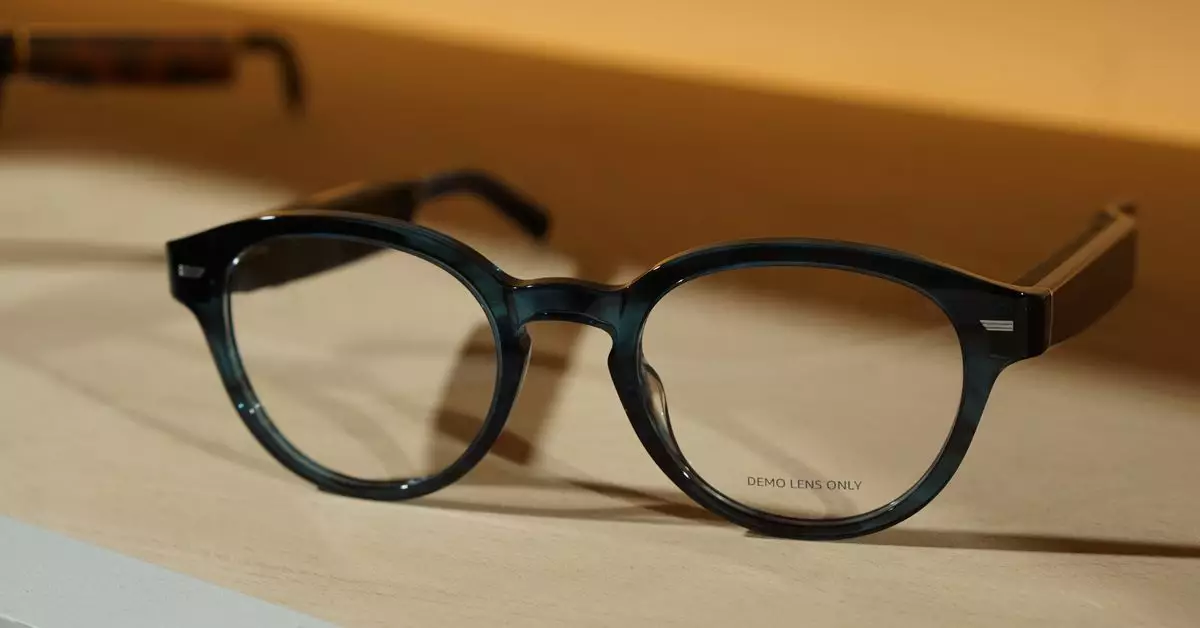In the ever-evolving landscape of technology, Amazon is venturing into uncharted territory by reportedly developing smart glasses specifically designed for its delivery personnel. As reported by Reuters, the innovative product, codenamed “Amelia,” aims to provide delivery drivers with advanced turn-by-turn navigation, significantly streamlining the last leg of the delivery process. This maneuver reflects Amazon’s ongoing commitment to improving operational efficiency and responsiveness in service delivery, especially at the critical juncture before a package reaches its final destination.
The increasing demand for faster delivery services has necessitated the adoption of innovative technologies in the logistics sector. With changing consumer expectations, companies are continuously exploring ways to enhance service efficiency. Amazon’s ambitious plans for smart glasses could potentially redefine how delivery services are executed on a daily basis. By integrating a display into the existing framework of Echo Frames, these smart glasses promise not only audio feedback but also visual cues to guide drivers. This dual-functionality could result in significant time savings—every second counts in the world of deliveries.
However, the development of these smart glasses is not without its challenges. One of the primary concerns surrounds creating a device that can endure the rigorous demands of an eight-hour delivery shift while remaining lightweight and comfortable. The incorporation of a battery that lasts the entire workday is a daunting engineering obstacle. Previous attempts by various companies have exposed the difficulties involved in harmonizing functionality with user comfort.
Moreover, given the prevalence of corrective lenses among the general population, the existing smart glasses technology has struggled to accommodate diverse prescriptions. This complicates the potential widespread adoption of Amelia among delivery personnel who require specific visual aids. Amazon will need to address these technological and ergonomical hurdles if it hopes to see its vision materialize into practical solutions for its workforce.
As interested as Amazon might be in this cutting-edge technology, the path to widespread adoption is fraught with potential roadblocks. One significant challenge is the diverse nature of Amazon’s delivery workforce, which includes many third-party contractors. Convincing a varied group of individuals to embrace a new technological tool will require effective training, seamless integration into existing workflows, and demonstrable benefits.
Furthermore, the lackluster sales of the previous generation of Echo Frames—reportedly fewer than 10,000 units—suggests that consumer acceptance of smart glasses has been lukewarm at best. This adds a layer of uncertainty as to whether Amazon should focus purely on in-house applications or consider opportunities for the broader market. The appeal to third-party enterprises within logistics could open new avenues for revenue but would necessitate substantial investment in developing partnerships.
A crucial component support the integration of smart glasses is the extensive data collection pertaining to the delivery environment. For the adoption of Amelia to be practical, Amazon must gather comprehensive information about building layouts, urban infrastructure, and pedestrian pathways. This extensive data collection phase could take years and presents another significant hurdle in product implementation.
The notion that smart glasses could also find eventual applications beyond Amazon’s delivery network hints at future expansion possibilities. While the initial focus is on improving the service’s operational efficiency, there lies potential for consumer markets should the technology prove successful. Many tech firms have previously pivoted towards enterprise solutions when consumer products underperformed; Amazon may find itself standing at a similar crossroads.
While Amazon’s foray into smart glasses presents exciting opportunities to revolutionize its delivery services, several challenges loom. The marvels of innovation must be met with user comfort, practical engineering, and significant market dynamics, making the execution of this vision a monumental task. As the company embarks on this venture, only time will tell how effectively these obstacles are navigated and whether Amelia will ultimately transform the last leg of the package delivery experience.


Leave a Reply